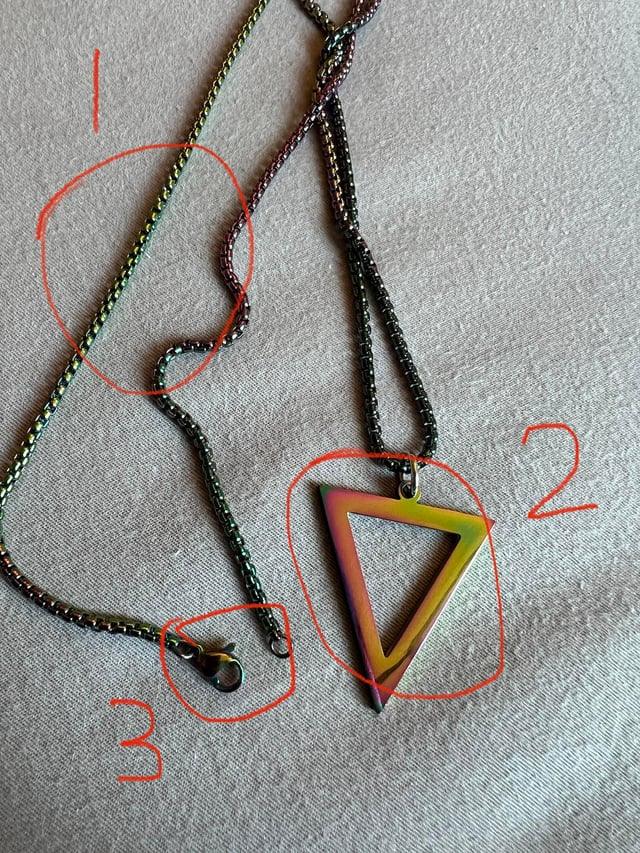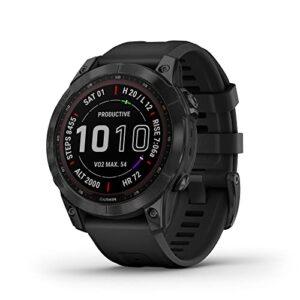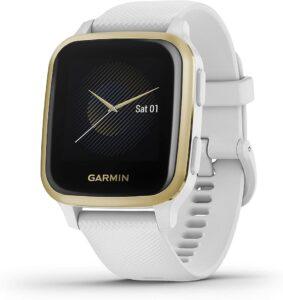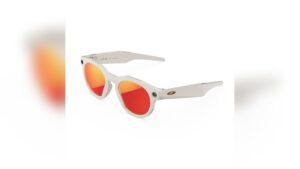Have you ever stopped to wonder what makes up your favorite necklace? Understanding the parts of a necklace can change how you choose, wear, and even care for your jewelry.
When you know the names and functions of each piece, you’ll feel more confident picking out styles that suit you perfectly. Stick with me, and I’ll break down every part of a necklace in simple terms—so the next time you put one on, you’ll see it in a whole new light.
Basic Necklace Components
Necklaces have several basic parts that work together to create a beautiful piece of jewelry. Each part plays a role in how the necklace looks and feels. Knowing these parts helps you choose the right necklace for any occasion.
Chain Types
The chain is the main part that goes around the neck. Chains come in many styles. Some common types are cable, rope, box, and curb chains. Each chain style has a different look and strength. Chains can be thin and delicate or thick and bold.
Clasps And Fasteners
Clasps keep the necklace closed and secure. There are many clasp types, like lobster, spring ring, toggle, and magnetic clasps. Clasps must be easy to open and close but strong enough to hold the necklace in place.
Pendants And Charms
Pendants hang from the chain and add style to the necklace. They can be simple shapes, gems, or meaningful symbols. Charms are smaller and often come in sets. Pendants and charms make a necklace unique and personal.

Credit: blog.landofodds.com
Chain Styles And Materials
The chain is a key part of any necklace. It holds the pendant or stands alone as a style. Chains come in many styles and materials. Each style changes the necklace’s look and feel. Materials affect weight, shine, and durability. Understanding these can help you pick the right necklace for any occasion.
Link Variations
Chains are made from different link patterns. Cable chains have simple round or oval links. They are classic and strong. Figaro chains mix short and long links. They create a unique, textured look. Rope chains twist links together to look like a rope. They shine brightly and are quite durable. Box chains have square links that fit tightly. They look smooth and modern. Each link style changes the chain’s style and strength.
Common Metals Used
Most necklaces use metals like gold, silver, and stainless steel. Gold is popular for its color and value. It comes in yellow, white, and rose tones. Silver is bright and affordable. It can tarnish but cleans easily. Stainless steel is tough and resists rust. It has a modern, sleek look. Some chains use plated metals to lower cost. The metal choice affects price, look, and care needed.
Specialty Chains
Specialty chains offer unique looks and textures. Snake chains have tightly linked rings that form a smooth tube. They feel soft and flexible. Ball chains have small metal balls linked by rods. They add a casual or industrial look. Omega chains lie flat against the skin, offering a bold style. Specialty chains often highlight the necklace’s design. They provide variety beyond common link styles.
Clasp Varieties
Necklace clasps are small but important parts of jewelry. They hold the ends of a necklace together. Clasps come in different styles and shapes. Each type offers its own benefits and ease of use. Choosing the right clasp can make wearing a necklace easier and more secure.
Lobster Clasp
The lobster clasp looks like a small lobster claw. It has a spring-loaded arm that opens and closes. This clasp is strong and holds the necklace firmly. It is popular for many types of necklaces. Many people find it easy to open and close.
Spring Ring Clasp
The spring ring clasp is round and hollow. It opens by pulling a small lever. When released, the lever snaps back. This keeps the necklace secure. It is common on light and delicate necklaces. It works well but can be tricky for some to fasten.
Toggle Clasp
The toggle clasp has two parts: a bar and a ring. The bar fits through the ring to close. It stays in place by resting across the ring. This clasp is stylish and easy to use. It adds a decorative touch to many necklaces.
Magnetic Clasp
The magnetic clasp uses magnets to hold the necklace ends. It is very easy to fasten and unfasten. This clasp suits people with limited hand strength. It works well for light to medium weight necklaces. Some magnets are strong enough to keep the necklace secure.

Credit: kilts-n-stuff.com
Decorative Elements
Decorative elements give a necklace its unique look. They add style and personality to simple chains. These parts catch the eye and often hold the most value. Understanding these elements helps you appreciate any necklace’s beauty.
Gemstones And Beads
Gemstones and beads are common decorative parts on necklaces. Gemstones include diamonds, rubies, sapphires, and many others. Beads can be made from glass, wood, or plastic. They add color, sparkle, and texture. These elements often form the main focus of a necklace.
Engraved Tags
Engraved tags are small metal pieces attached to necklaces. They usually have brand names, logos, or special messages. Some tags show the metal type or quality. These tags add a personal or authentic touch to the necklace. They are subtle but important decorative details.
Bails And Connectors
Bails and connectors link different parts of a necklace. A bail connects a pendant to the chain. Connectors join beads or sections of the necklace together. They come in various shapes and sizes. Though small, they help the necklace hang properly and look complete.
Additional Necklace Parts
Necklaces have more parts than just the chain and clasp. Some extra pieces help improve fit, protect the necklace, and connect parts. These additional necklace parts are small but very useful. They make wearing jewelry easier and safer.
Extender Chains
Extender chains add length to a necklace. They allow you to wear a necklace shorter or longer. This helps match different necklines or layers of jewelry. Extenders are small chains attached to the main necklace. You can hook the clasp on any link for the perfect fit.
Jump Rings
Jump rings are tiny metal loops. They connect different parts of a necklace. For example, they link the clasp to the chain. Jump rings are strong but flexible. Jewelers open and close them to add charms or fix broken parts. Without jump rings, many necklaces would fall apart.
Wire Guards
Wire guards protect thin chains from damage. They are small tubes or loops placed where the clasp attaches. Wire guards stop the chain from bending or breaking at weak spots. They help necklaces last longer and keep their shape. Wire guards are common in delicate and expensive necklaces.
Choosing Necklace Parts
Choosing the right parts for a necklace is important. It affects how the necklace looks and feels. Each part has a role in style and function. Picking parts carefully helps create a necklace you will enjoy wearing. Here are some key points to think about when selecting necklace parts.
Matching Style And Function
Every necklace part should match the overall style. A delicate chain works well with small pendants. Chunky clasps suit bold, statement pieces. Think about the necklace’s purpose. A simple design fits daily wear. More detailed parts suit special occasions. Style and function must work together.
Material Durability
Choose materials that last long and resist damage. Metals like gold and silver stay strong over time. Some parts need more strength, like clasps and jump rings. Avoid weak materials that break easily. Durable parts keep your necklace safe and wearable.
Comfort And Fit
Necklace parts affect how the necklace feels on your skin. Smooth chains are gentle and comfortable. Clasps should open and close easily. The length must fit your neck well. Comfortable parts make wearing the necklace pleasant all day.

Credit: www.reddit.com
Frequently Asked Questions
What Are The Main Parts Of A Necklace?
A necklace typically has a chain, clasp, pendant, and sometimes extender links. The chain holds the necklace together. The clasp secures it around the neck. The pendant adds decoration. Extender links adjust length for comfort.
How Does A Necklace Clasp Work?
A necklace clasp connects both ends of the chain. It allows easy wearing and removal. Common types include lobster claw, spring ring, and toggle clasps. Each type locks securely to prevent the necklace from falling off.
What Is A Necklace Pendant?
A pendant is a decorative piece hanging from the chain. It can be a gemstone, charm, or artistic design. Pendants personalize necklaces and add visual appeal. They vary in size, shape, and material.
Why Do Necklaces Have Extender Chains?
Extender chains let you adjust necklace length. They provide flexibility for different neck sizes and outfit styles. Extenders ensure a comfortable fit and enhance necklace versatility.
Conclusion
Knowing the parts of a necklace helps you appreciate its beauty. Each piece has a special job to do. From the chain to the clasp, every part matters. Understanding these parts makes choosing jewelry easier. It also helps when fixing or cleaning your necklace.
Now, you can talk about necklaces with confidence. Jewelry feels more meaningful when you know its details. Keep exploring and enjoy wearing your favorite pieces. Simple knowledge adds value to something you love.

Madison Clark is a footwear expert and the voice behind MyStyleGrid.com. She specializes in honest shoe reviews, style tips, and practical guides to help readers find the perfect pair for any occasion. With years of experience in blogging and content creation, Madison makes footwear knowledge simple, stylish, and easy to follow.







